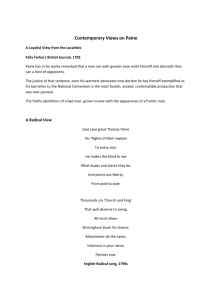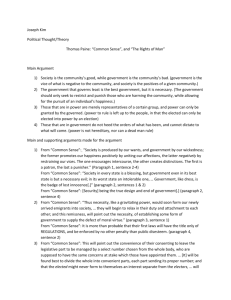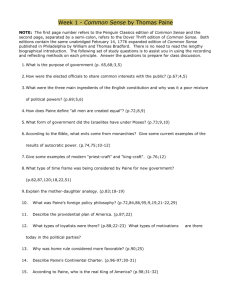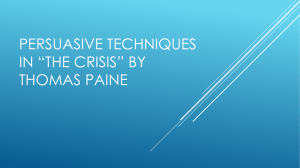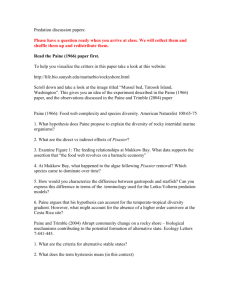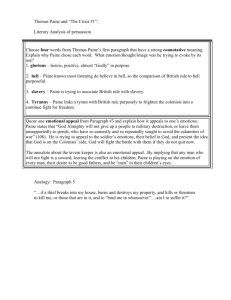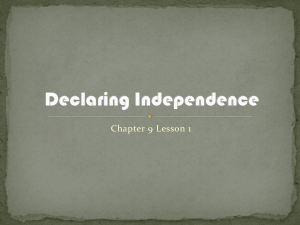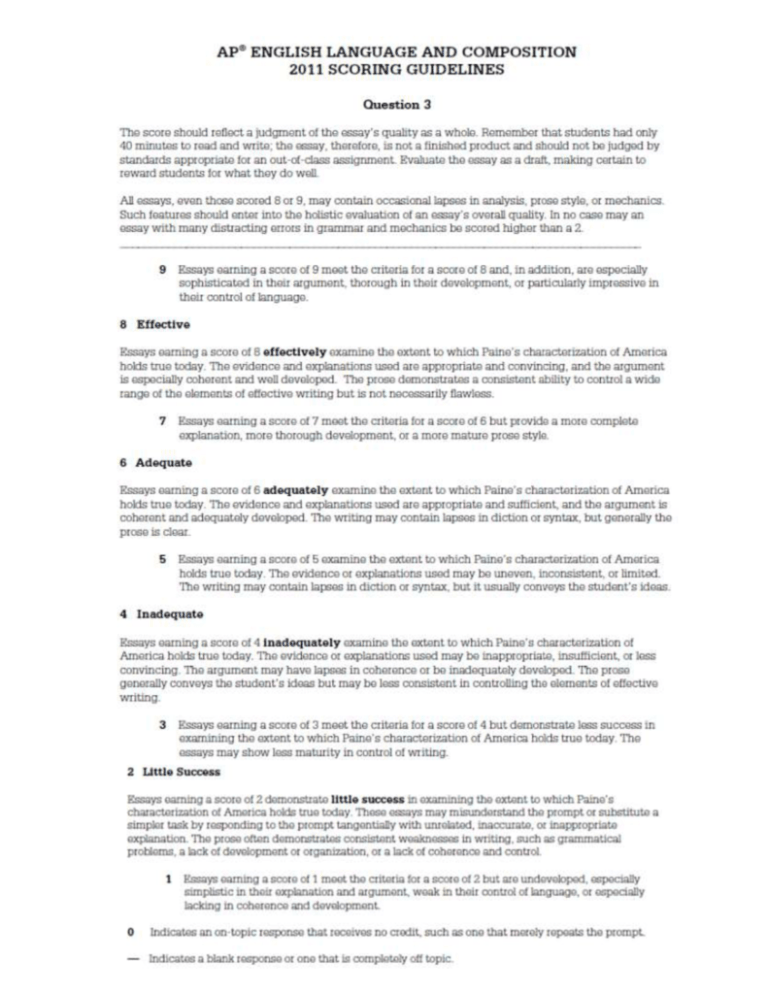
Sample FF:
Paine’s idealistic characterization of America, as described in this excerpt from Rights of Man,
was not totally accurate when he wrote it in 1791, and it is not completely true today either. Although
America has made progress towards Paine’s rosy idea of “cordial union,” that progress has certainly not
been rapid or without its “riots and tumults.” We are closer to freedom and equal rights for those of
different ethnicities, genders, and sexual orientations, and our government is more just than it used to be,
but we have hardly attained Paine’s utopian vision.
In 1791, when Paine wrote Rights of Man, what he meant was the rights of white men, not the
rights of all humans. The “principles of society and the rights of man” he talks about were only
selectively applied by the society and government of the time. Most blacks were still slaves, and women
weren’t allowed to vote or own land, etc. Those were the laws of an unjust government and society.
Today, in 2011, things are very different, but still not perfect. In the last 100 years, modern America has
lived through the tumultuous days of the women’s suffrage movement, the civil rights movement, and we
are still in the midst of the gay rights movement. Even as late as the 1960s, black Americans still had to
drink from “colored” bubblers, eat in different restaraunts, and use different restrooms. Even years after
the Supreme Court decision in Brown vs. Board of Education in the 50s, many schools in the South were
still segregated. Riots broke out in the streets of Alabama as blacks and whites clashed. Acid was thrown
in the faces of black students like Melba Patillo in newly desegregated schools in Little Rock. Martin
Luther King, Jr., one of the great leaders of the civil rights movement, was assassinated. So was Malcom
X. And Harvey Milk. People working to make Paine’s vision a reality for oppressed Americans were
frequently gunned down for it. The U.S. was hardly a place where different people came together in
harmony, or even cold tolerance, even though many shared the same language and the same religion.
The tumult didn’t stop in the 60s or 70s either. In the early 90s, race riots broke out across the
U.S., but primarily in LA and Chicago after the white cops were aquitted of beating Rodney King, a black
man, even though there was video that showed them doing it. Is that a picture of a just government or
society? Many high schools in southern Louisiana still have two proms, a white prom and a black prom.
And after 9/11 if you were a Muslim man at an airport, you inevitably got “randomly” searched. While
police don’t like to admit it, many of the departments use racial profiling. Our government is sadly not as
just as Paine thought. It might seem just if you are a wealthy white man, but if you are a young black
man walking around in New Orleans’ garden district at night, you’re sure to get pulled over by the police
because you are WWB—walking while black, which means you don’t belong in such a nice, white
neighborhood. So while blacks and whites and hispanics, men and women, can all drink from the same
bubbler now, there isn’t total “cordial” unity. Black men like James Byrd Junior and Anthony Hill still
get road hauled in the South (that means dragged to death behind a pickup), but instead of getting off scott
free and slapped on the back by some good old boy judge, the racists now get slapped with hate crimes
which means an extra five or ten years in jail. Just having hate crime laws shows that there is a big
discrimination problem in America, otherwise we wouldn’t have these laws. But at least we recognize
that it really is henous and should be punished accordingly. So things are changing. We even have a
black president now. Some people thought that could never happen. We are horrified when gay men are
attacked with baseball bats in LA, but can you imagine the controversy if a hispanic gay man ran for
president? We are still a long way from the civil harmony of Paine’s dream.
Note: This intro/thesis is fine. Almost none of the first body paragraph counts as evidence because it is
all too old—not about “today.” The only thing that is close is the gay rights movement, but there is only a
mention of it, no real evidence. Basically this paper will only be given credit for the intro/thesis
paragraph and the second body paragraph, which is a shame because body paragraph one has some good
details (they just aren’t relevant). Body paragraph two is better because it is about today, and there are
some good details, although we also get unsupported generalizations and weak evidence as well. This
person could, I think, write a 9, but the wasted time in body paragraph one forces the next paragraph to
cram in evidence to the point where it is almost listing things without developing them well.

